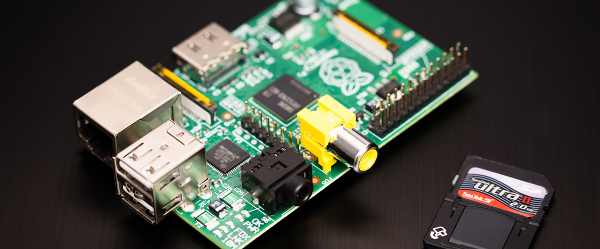
The Raspberry Pi, a British-built tiny computer that costs around £35, has revolutionised the way people have gone about learning to code in the past two years.
The credit-card sized computer can plug into a monitor and keyboard, and makes a fun little unit to which the open-source operating system can let you do anything you dream of. At the very least, you can carry out basic PC functions on it like word processing, spreadsheets, and learning to code.

Here’s a list of some of the coolest uses tinkerers around the world have put their Pi to. But what about the basics? If you have all the right components, the Raspberry Pi can make a very cheap, DIY PC for your home.
Here’s what you’ll need:
Raspberry Pi Model B
Optional Raspberry Pi Case
MicroUSB 5V power cable
USB Keyboard and mouse
HDMI Monitor
HDMI Cable
8GB SD card (this is the Pi’s storage device)
Ethernet cable (or Wi-FI dongle)
Optional PC speakers
Places like schools and businesses can put the Raspberry Pi to economically-valuable use, creating a fleet of PCs for just a fraction of the cost of standard, pre-built machines, and they can also be carried around very easily if they’re in cases. Sure, the hardware specs won’t blow anything out of the water, but for learning to code, programming, and having fun with technology, the Pi is a solid bet.
All the information and how-to you need can be found across varying forums and the Raspberry Pi website. Here’s our basic, broken down guide to making a working PC from the Pi.
1) Download the Pi’s New Out of Box Software (NOOBS) onto your SD card.
2) Power up the Pi with the 5v micro USB. The Pi Foundation recommends a 1.2A power supply, as this will give you ample power.
3) Connect up the USB mouse, keyboard, and then connect the unit to your monitor. Conect to the Internet via ethernet or Wi-Fi
4) Connect speakers to the audio jack if you wish.
It really is as simple as that. Here’s the handy quick start guide from the Raspberry Pi Foundation.

Of course, with a great developer community associated with programming, and the sheer volume of interest in the Pi, one Kickstarter projects aims to do all of this hard work for you.
Kano absolutely smashed its Kickstarter goal, and is now preparing to ship its Lego-inspired kits which come with everything but a monitor, all ready to start using Pi and learn to code. The kit looks attractive, is very easy to set up and drops you right at the start of the learning curve, allowing you to build up confidence and then use its pre-installed software to start programming with games like Pong and Minecraft.
Kano bills its computer kits "for all ages, all over the world," and will start general shipping in July. In the UK, the Kano kit costs just £79 (this includes a Raspberry Pi unit) so it’s brilliant value for money.
"Like the Raspberry Pi, the "brain" at the heart of its kit, Kano is based in the Britain, where coding will enter the core curriculum for all students this September," said Kano.
The kit ships with Kano’s own software, KanoOS, which is built upon Debian. It comes with its own graphical programming language called Kanoblocks with makes learning to code with Javascript or Python very easy.

What you get with Kano
So with this kit, all you need to pick up is a monitor, and you can be off, learning to code and surfing the web with a machine put together by yourself.




